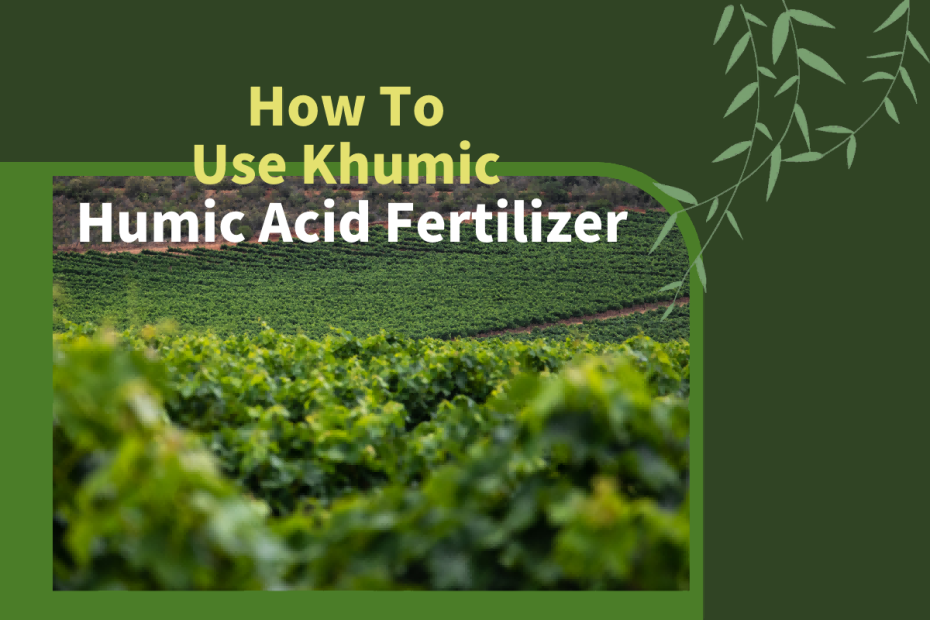Introduction
In the world of agriculture, the use of fertilizers is crucial to ensure optimal plant growth and crop yield. One type of fertilizer that has been gaining popularity in recent years is humic acid fertilizer. But what exactly is humic acid fertilizer, and why should you consider using it for your plants? Let’s dive into the fascinating world of Khumic humic acid fertilizer and explore its benefits, ingredients, application methods, precautions, and effectiveness.
What Is Humic Acid Fertilizer?
Humic acid (HA) fertilizers are organic molecules that contain high levels of humus. Plays an important role in improving soil properties, plant growth, and agronomic parameters. Sources of humic acid include coal, lignite, soil, and organic materials. For example, Khumic’s humic acid uses highly active weathered lignite from Xinjiang as raw material. In recent years, humic acid products have been widely used in crop production to ensure the sustainability of agricultural production. Humic acid fertilizers can positively impact soil’s physical, chemical, and biological properties, including texture, structure, water-holding capacity, cation exchange capacity, pH, soil carbon, enzymes, nitrogen cycling, and nutrient availability. Can be combined with plant roots to help plant roots absorb water and nutrients. High humic acid content significantly increases yield. Humic acid deficiencies prevent farmers and gardeners from growing nutritionally optimal crops.
Benefits of Using Khumic Humic Acid Fertilizer
- Enhanced Nutrient Absorption
One of the main benefits of using Khumic humic acid fertilizer is its ability to enhance plant uptake of nutrients. The humus in humic acid fertilizers acts as a chelating agent, helping to dissolve essential nutrients in the soil, and making them easier for plants to use.
- Improve Soil Health
Humic acid fertilizers also improve soil health by promoting microbial activity and improving soil fertility. The organic matter in fertilizers is food for beneficial soil microorganisms, which in turn helps break down nutrients and enables plants to absorb them.
- Increase Plant Growth and Yield
Khumic Humic Acid Fertilizer can significantly boost plant growth and crop yields by providing plants with essential nutrients and promoting healthy root development. Plants grown using humic acid fertilizers are generally healthier, more resistant to stress, and produce higher-quality fruits and vegetables.
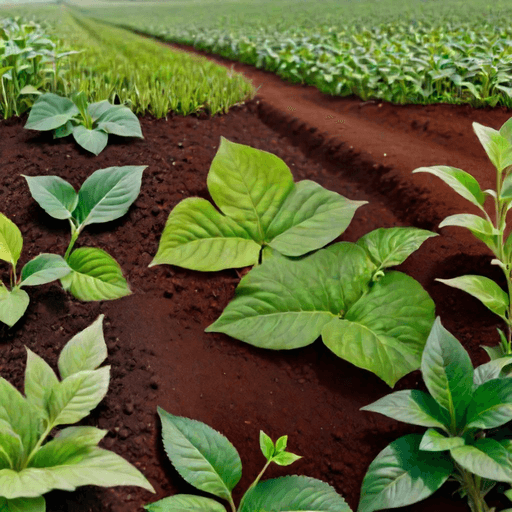
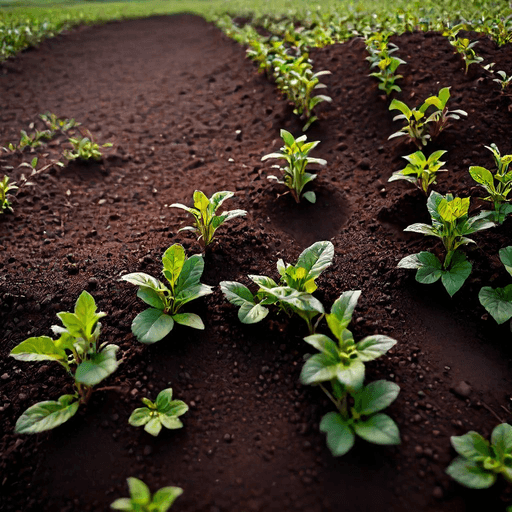
Learn About the Ingredients of Khumic Humic Acid Fertilizer
The main components of humic acid fertilizer include humic acid, fulvic acid, organic matter, and trace minerals. These ingredients work together to improve soil fertility, enhance nutrient absorption, and promote plant growth.
How do These Ingredients Benefit Plants?
- Humic Acid: Helps chelate nutrients, making them more readily available to plants and improving soil structure. Humic acid improves soil structure by enhancing its water-holding capacity, aeration, and nutrient retention. Further aids nutrient cycling and enhances soil fertility by promoting the growth of beneficial soil microorganisms.
- Fulvic Acid: Promotes nutrient absorption and enhances plant metabolism. Supports various physiological processes within plants, thereby increasing vitality, resilience, and productivity. Assists in the transport of nutrients within plants and promotes efficient utilization of essential elements required for optimal plant development.
- Organic Matter: Provides a source of nutrients for soil microorganisms such as bacteria and fungi and enhances soil vitality. Improve soil structure, water retention, and aeration. Enhances the soil’s ability to retain important nutrients such as nitrogen, phosphorus, and potassium, making them easier for plants to use.
- Trace Minerals: Essential for plant development and overall plant health. Trace minerals such as iron, zinc, copper, manganese, boron, and molybdenum are involved in enzyme activation, photosynthesis, hormone regulation, and overall plant health. When plants are deficient in these trace minerals, they display a variety of deficiency symptoms, including leaf discoloration, stunted growth, reduced yields, and disease susceptibility.
How to Apply Humic Acid Fertilizer
First, dilute the <strong><a href=”https://fulvicmax.com/product/”>humic acid fertilizer</a></strong> according to the manufacturer’s instructions (or ask customer service for the dilution ratio based on soil and plant conditions). A specific amount of concentrated humic acid is mixed with water to form a dilute solution suitable for the application.
Soil application
One of the most common methods of applying humic acid fertilizers is soil application. This includes mixing fertilizer with soil before planting or top-dressing existing plants with fertilizer. Pour the diluted humic acid solution directly onto the soil around the base of the plant. This method allows the humic acid to penetrate the soil and reach the plant roots.
Foliar spraying
Another effective method of applying humic acid fertilizers is foliar spraying. This method involves spraying a dilute humic acid solution directly onto the plant leaves. Make sure to cover thoroughly, especially the undersides of leaves for quick absorption of nutrients (apply early in the morning or late afternoon to minimize evaporation).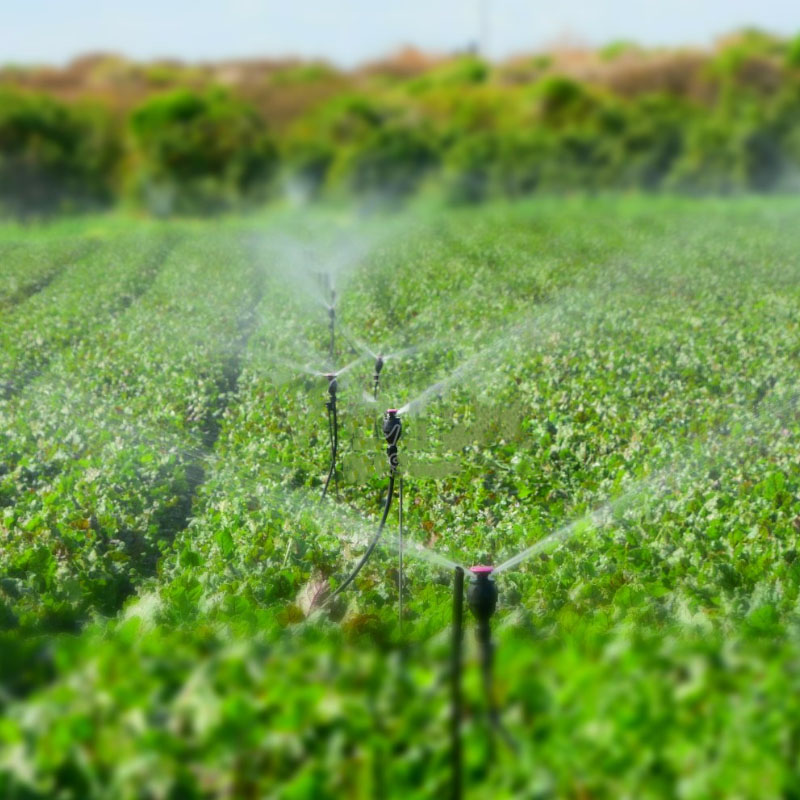
Seed treatment
For seeds, apply a dilute humic acid solution to the seeds before sowing. This helps improve seed germination, root development, and early plant survival. This method ensures that the seedlings receive the necessary nutrients from the start. (Allow seeds to dry before sowing.)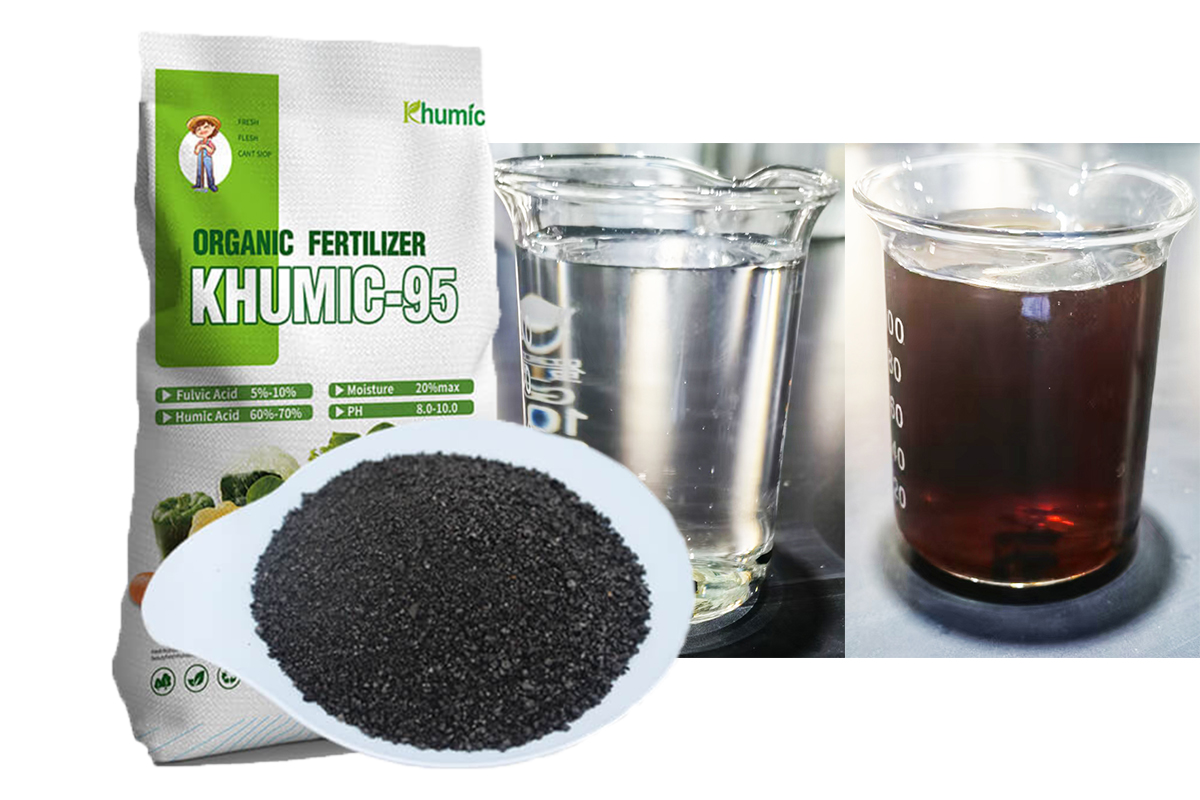
Dosage and Timing of Humic Acid Fertilizer Application
The Recommended Dosage for Different Crops
The following are normal recommended dosages. Khumic provides customization and after-sales service and can provide detailed instructions according to specific situations.
- Vegetables:
Leafy greens: 2-4 quarts per acre.
Tomatoes: 2-4 quarts per acre.
Root vegetables: 3-5 quarts per acre.
- Fruits:
Berries: 2-4 quarts per acre.
Citrus fruits: 3-5 quarts per acre.
Tree fruits: 4-6 quarts per acre.
- Grains:
Wheat: 2-4 quarts per acre.
Corn: 3-5 quarts per acre.
Rice: 4-6 quarts per acre.
The Best Time to Apply
- Pre-planting: Apply humic acid fertilizer before planting to prepare the soil and provide essential nutrients for initial plant growth.
- Growth Stage: Apply during key growth stages such as seedling, flowering, and fruiting periods to help ensure plants get the nutrients they need when they need it most.
- Regular Maintenance: Apply regularly throughout the growing season to maintain soil health and nutrient availability for continued plant growth.
- Post-harvest: Apply after harvest to replenish soil nutrients and prepare it for the next planting season.
Adjust dosage according to specific crop requirements, soil conditions, and plant growth stage to optimize the benefits of humic acid fertilizers for different crops. Be sure to apply consistently at the recommended times, usually every few weeks or as recommended on the product label, to promote healthy plant growth and maximize crop yields.
Khumic Humic Acid Fertilizer Mixed with Other Fertilizers
Compatibility with Other Fertilizers
Khumic humic acid fertilizers are generally compatible with most NPK fertilizers, making them easy to incorporate into existing fertilization plans. It can also be mixed with other nutrients or applied alone, depending on the specific needs of the plant.
Benefits of Khumic Humic Acid Fertilizer Combined with Other Nutrients
- Enhanced nutrient absorption: Humic acid can improve the utilization of other fertilizer nutrients. Enhance the overall absorption and utilization of nutrients by plants
- Improves Soil Health: Promotes soil microbial activity and enhances soil structure.
- Nutritional balance: ensure comprehensive nutrient supply for plant growth and development. Improves plant growth, increases crop yields, and improves overall plant health.
Precautions and Safety Measures When Using Humic Acid Fertilizers
Handling and Storage Precautions
When handling humic acid fertilizers, it is important to wear appropriate protective gear, such as gloves and goggles, to prevent skin and eye irritation. Store fertilizer in a cool, dry place and seal it away from direct sunlight and moisture. Keep out of the reach of children and pets to prevent accidental ingestion.
Environmental Impact Considerations
While humic acid fertilizers are generally considered environmentally safe, recommended application rates must be followed to prevent overuse from causing nutrient runoff into water bodies, resulting in water contamination. Correctly managed use of humic acid fertilizers can help protect water sources and reduce environmental impact, ensuring plants use nutrients efficiently.
Monitoring and Evaluation of the Effectiveness of Khumic Humic Acid Fertilizers
How to Evaluate the Impact on Plant Growth
Monitor plant growth parameters over time, such as height, leaf color, flowering and fruiting, and track any changes in plant health, yield and overall performance to determine the impact of humic acid fertilizers.
Conduct soil testing to evaluate nutrient levels and soil health improvements resulting from humic acid applications.
Compare plant growth in treated and untreated areas to measure the effectiveness of humic acid fertilizers.
Signs of Over- Or Under-Application
Watch for signs of over- or under-application of humic acid fertilizers and adjust application rates as needed to ensure plants receive the right amount of nutrients for optimal growth.
- Over application:
Plants are overgrown or leafy.
Nutritional imbalance causes leaf burn or discoloration.
Water infiltration is reduced due to soil compaction.
- Insufficient fertilization:
Retarded growth or poor development.
Yellowing or chlorosis of leaves indicates nutritional deficiencies.
Yield or fruit quality is reduced compared to expected results.
Conclusion
In conclusion, Khumic humic acid fertilizer is an important tool for promoting healthy plant growth, improving soil health, and increasing crop yields. By understanding the benefits, ingredients, application methods, precautions, and effectiveness of humic acid fertilizers, you can harness the power of humic acid fertilizers to optimize your farming practices and achieve better results in your garden or farm.
FAQ
1. What is the shelf life of Khumic humic acid fertilizer?
Humic acid fertilizers typically have a shelf life of 1 to 3 years, depending on storage conditions and specific formulation. It is recommended to check the product label or consult after-sales customer service to understand the manufacturer’s recommended shelf life.
2. Can humic acid fertilizer be used in organic farming?
Yes, humic acid fertilizer is commonly used in organic farming because it is derived from organic materials such as weathered lignite or peat. It is considered a natural soil conditioner that enhances soil fertility and plant growth, consistent with organic farming practices.
3. How does humic acid fertilizer improve soil structure?
Phytate fertilizers improve soil structure by promoting soil particle aggregation, enhancing water retention, increasing nutrient utilization and stimulating microbial activity. This results in better aeration, root development and overall soil health.
4. Are humic acid fertilizers suitable for all types of crops?
Humic acid fertilizers are beneficial for a variety of crops, including vegetables, fruits, grains and ornamental plants. It enhances nutrient uptake, improves soil structure and stimulates plant growth, making it suitable for a variety of crop types.
5. Can Khumic humic acid fertilizer be used in hydroponic systems?
Yes, Khumic Humic Acid Fertilizer can be used in hydroponic systems. When properly diluted, it can provide essential nutrients, enhance nutrient absorption, and support plant growth in a hydroponic environment. However, manufacturer guidelines must be followed when applying in hydroponic systems.
